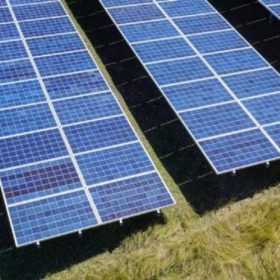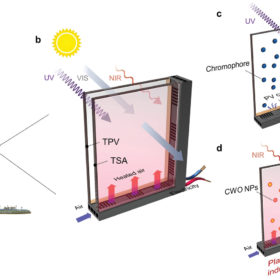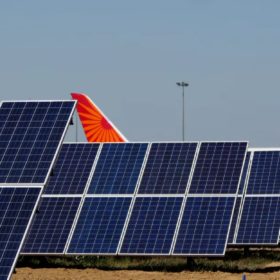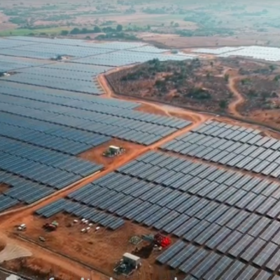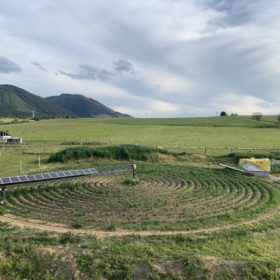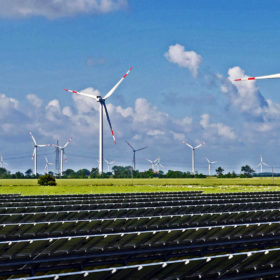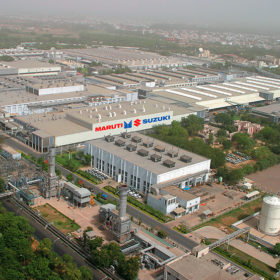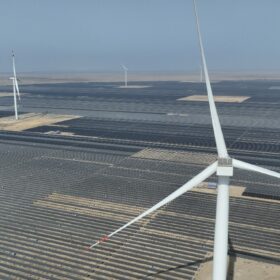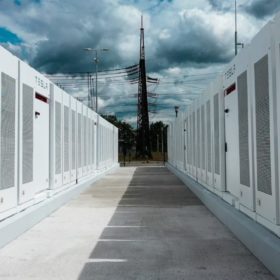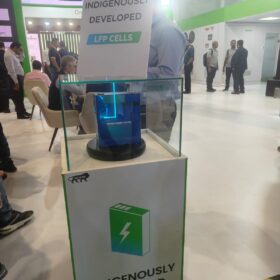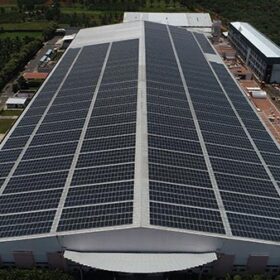India’s first fractionally owned, ground-mount solar plant
A 5 MW open-access solar project in Karnataka is India’s first fractionally owned, ground-mount PV plant. Bengaluru-based Pyse is financing the INR 26 crore ($3.3 million) project through its investment platform, which allows retail investors to own a stake for as little as INR 10,000.
Solar window generates electricity, thermal energy
A research team in Hong Kong has built a solar window that can generate power on the external side via a luminescent solar concentrator and thermal energy on the internal side via transparent solar absorbers.
Delhi airport becomes India’s first aviation hub to run on solar, hydropower
Indira Gandhi International Airport (IGIA) in Delhi meets 6% of its electricity requirements from onsite solar plants, and the remaining 94% from hydropower.
Ornate Solar commissions made-in-India, roof-integrated solar system
Ornate Solar’s engineering team designed, engineered and manufactured the new 530 kWp InRoof solar system in India. It serves as the primary roof over Pangaea Natural Stone’s factory in Rajasthan, covering a total area of 35,000 square feet.
ReNew’s operational renewables portfolio hit 7.6 GW in FY2021-22
ReNew Power’s total income rose 27% year on year to INR 69,195 million ($912 million) in fiscal 2021-22, on 130 MW of solar capacity additions in the fourth quarter alone. Its overall renewables portfolio rose to 10.7 GW at the end of March, including 7.6 GW of commissioned capacity and 3.1 GW of committed projects.
Tata Power posts 50% jump in net profit for FY2021-22
Tata Power’s profit after tax grew by 50% year on year to INR 2,156 crore ($276 million) for the fiscal year ending March 31, 2022.
Solar arm for agrivoltaic applications
A Slovakian startup has developed a photovoltaic-integrated arm that provides off-grid power for weeding and other small agricultural applications. In its largest configuration, the system is 18 meters long, has a capacity of 2.4 kW, and is able to cover a cultivated area of 994 m².
Indian renewable energy sector recorded $14.5 billion investment in FY2021-22
The investment needs to more than double to $30-$40 billion annually for India to reach the 2030 renewables target of 450 GW.
Telecom industry body hails green energy open-access reforms
The Cellular Operators Association of India has welcomed lowering of the green energy open-access transaction limit from 1 MW to 100 kW under the Electricity (Promoting Renewable Energy through Green Open Access) Rules 2022.
Maruti Suzuki installs Asia’s largest 20 MW solar carport
Maruti Suzuki’s new 20 MW solar carport will host about 9,000 finished vehicles and will meet 11.5 % of the total electricity requirements of its factory in Haryana.
